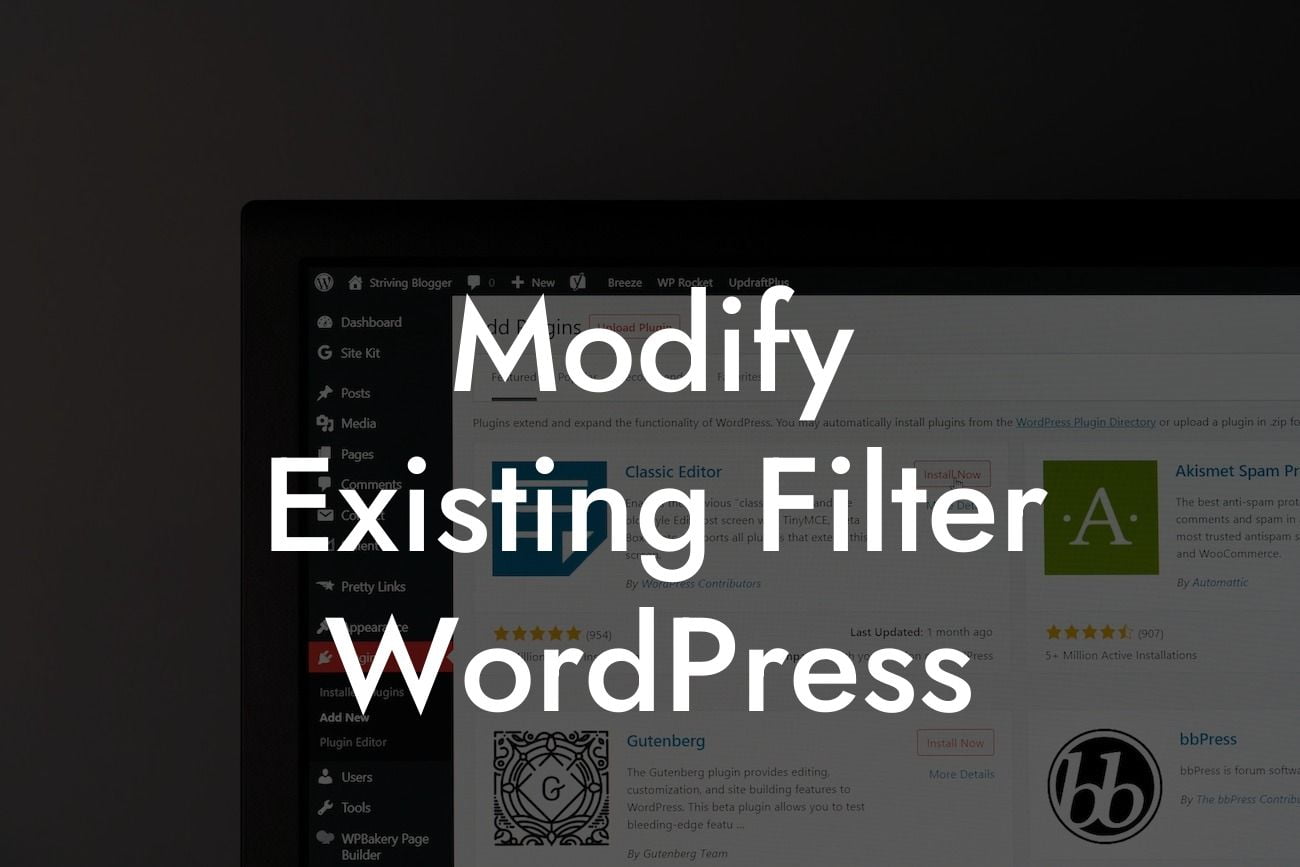WordPress offers a wide range of functionalities that can be customized to meet the specific needs of your small business or entrepreneurial website. One powerful feature is the ability to modify existing filters, allowing you to fine-tune various aspects of your site's functionality. In this article, we will guide you through the process of modifying existing filters in WordPress and show you how DamnWoo's plugins can take your online presence to the next level.
Filters in WordPress play a crucial role in modifying or enhancing the data and content that is being generated on your website. By hooking into these filters, you can manipulate the output in various ways without modifying the core code of your WordPress installation. Let's dive deeper into the process of modifying existing filters:
1. Understanding Filters: Before diving into the modification process, it's essential to understand the concept of filters. In WordPress, filters are functions that allow you to modify certain aspects of the output, such as changing the text, adding or removing elements, or modifying data. Familiarizing yourself with the most commonly used filters will be beneficial during the modification process.
2. Identifying the Filter: Once you have a clear understanding of filters, you need to identify the specific filter you want to modify. WordPress provides a vast array of filters, categorized based on their purpose. Whether it's modifying the content, adjusting the appearance, or customizing the functionality, pinpoint the filter that best aligns with your desired modifications.
3. Creating a Function: Once you have identified the filter to modify, you can create a custom function that hooks into the filter. This function will contain the code necessary to make the desired modifications. DamnWoo's plugins offer a user-friendly interface to create and manage custom functions, ensuring that your modifications are hassle-free.
Looking For a Custom QuickBook Integration?
4. Applying the Modifications: With the custom function in place, it's time to apply it to the identified filter. WordPress provides a simple function called `add_filter()` that allows you to apply your custom function to the chosen filter. DamnWoo's plugins offer an intuitive interface to easily apply your modifications and see instant results.
Modify Existing Filter Wordpress Example:
Let's consider a realistic example to illustrate the process. Suppose you want to modify the appearance of the blog post titles on your WordPress website. By identifying the appropriate filter and applying the necessary modifications, you can customize the font, color, or formatting of the titles to align them with your brand's aesthetic. With DamnWoo's plugins, you can easily implement this modification and make your blog posts stand out.
Congratulations! You now have a solid understanding of how to modify existing filters in WordPress. DamnWoo's powerful plugins provide you with the tools and flexibility to elevate your online presence and supercharge your success. Don't settle for cookie-cutter solutions – embrace the extraordinary with DamnWoo. Share this article with fellow small business owners and entrepreneurs, explore our other helpful guides, and take the leap to try one of our awesome plugins today!













